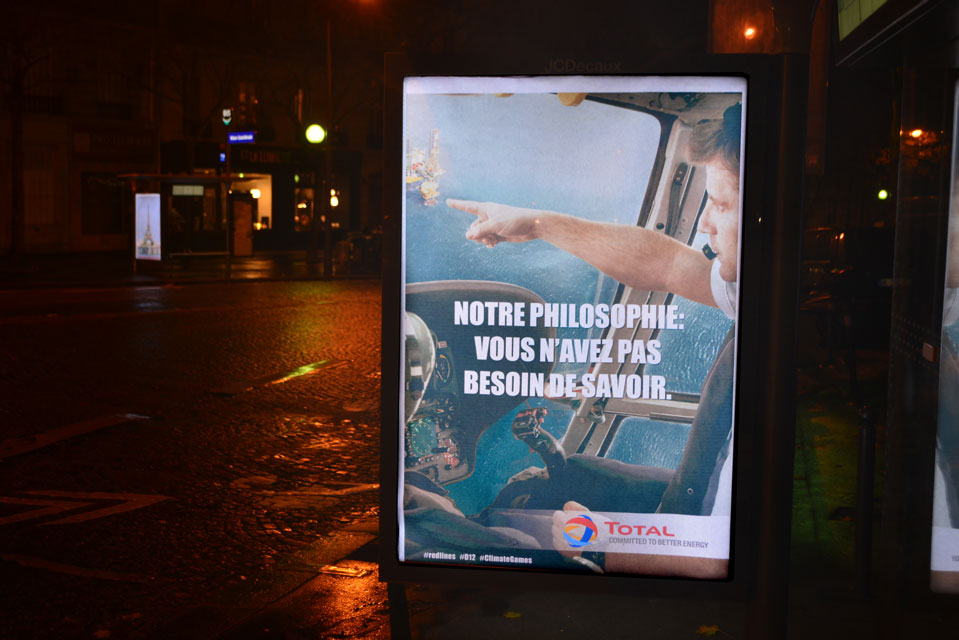Last May, the world-famous Louvre Museum in the heart of Paris had to be closed to rescue thousands of artworks from the rising waters of the Seine River, as Paris was hit by severe flooding. French president Hollande blamed the floods on climate change, which was soon after confirmed by scientists who found that the flooding event was made almost twice as likely by human-made climate change.
Just two centuries after humanity started to burn coal, oil and gas excessively, masterpieces of art that witnessed millennia of history have come under threat from the changes to the climate these emissions have primarily caused.

The Louvre is well aware of this threat. In 2002 it prepared a flood-protection plan that contains an inventory of works vulnerable to flooding and measures to slow down water entering the museum. The flood-protection plan however lacks steps to contain the threat of flooding in the first place, by doing what is in the museum’s power to stop climate change spiraling out of control. In fact, the museum currently maintains a partnership with one of the companies most responsible for causing climate change.
It is a fairly small number of companies that have caused climate change. A study from 2013 found that just 90 companies are responsible for two-thirds of manmade climate change. One of these companies is the French oil and gas major Total – and it is no other than Total that the Louvre entertains a sponsorship partnership with.
TOTAL-ly irresponsible
Unless coal, oil and gas production currently in operation is retired early, emissions from existing projects will push global temperature rise past 2℃ – the upper limit governments have agreed to in the Paris Accord. That leaves no space to open any new fossil fuel projects. Instead, existing coal, oil and gas operations need to be phased out urgently.
Total however pours massive investments into developing yet more oil and gas projects. It recklessly invests in ever more extreme forms to open up new reserves. It has for instance plans to drill in the sensitive Arctic, develop more oil from tar sands, expand offshore drilling and its fracking operations.

During the climate conference COP21, artists installed over 600 artworks in advertising spaces across Paris criticising corporate sponsors of the climate talks such as Total. Artwork by Barnbrook, Klink & Friends. Photo: Brandalism
In an attempt to make itself look as if it was taking the issue seriously, Total released an illusion of a climate strategy. At the same time, the company plans to invest more than $16 billion every year to develop fossil fuel extraction. That compares to a marginal $370 million for research and development (R&D) for ‘clean technologies and environmental issues’. A closer look at these R&D investments reveals that they are almost exclusively earmarked for gas, agrofuels and carbon capture and storage rather than renewable energy and energy efficiency.
The Louvre needs to take a stand
Through its partnership with Total the Louvre Museum lends legitimacy to Total’s rogue business model. Like other fossil fuel companies, Total relies on public acceptance to continue its destructive activities. That is precisely why they strike sponsorship deals with cultural institutions.
Museums, theatres and art galleries need to publicly break their ties to these companies. As the industry loses public acceptance, its political power to carry out its immoral business plans erodes. That is why climate activists and artists in France have launched a campaign to get the Louvre to end its partnership with Total.
Similar campaigns are underway at museums and art galleries in the UK, the USA and the Netherlands. They have already made some achievements. Shell no longer sponsors the British Science Museum. BP’s partnership with the Tate in London ended after 26 years and the American Museum of Natural History parted ways with its climate-denying oil mogul David Koch.

Artists from Liberate Tate performance at London’s Tate Britain gallery at the anniversary of the BP oil spill in the Gulf of Mexico. Photo: IMMO KLINK © 2011
The Louvre Museum has the laudable mission to build bridges between past civilisations and present and future generations. A partnership with a company whose activities do no less than threaten to rob future generations of a livable planet seems in no way compatible with the museum’s mandate.
Free the Louvre Museum from fossil fuels. Support the call: http://zerofossile.org/louvremuseum
This article was originally published on The Huffington Post.
